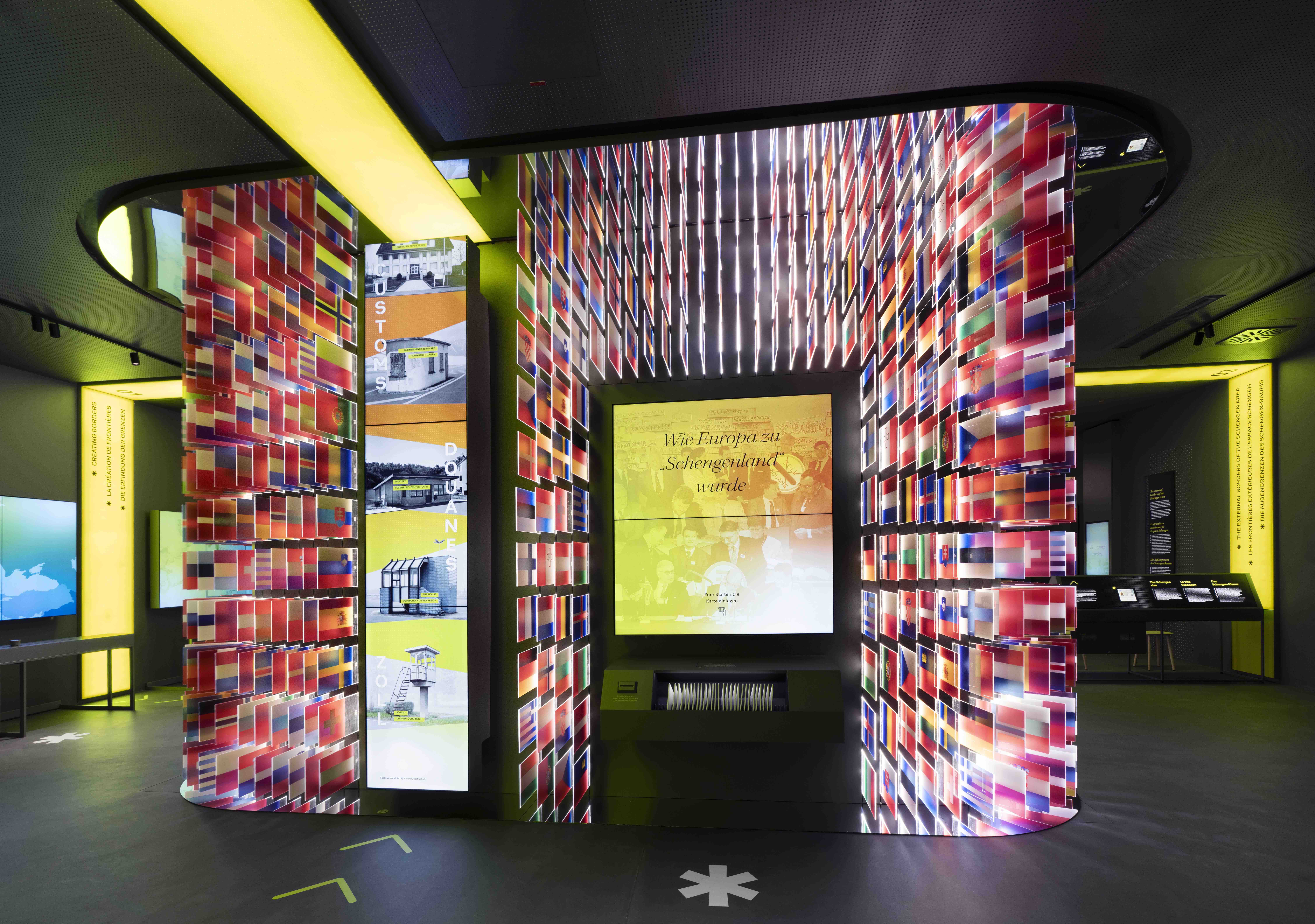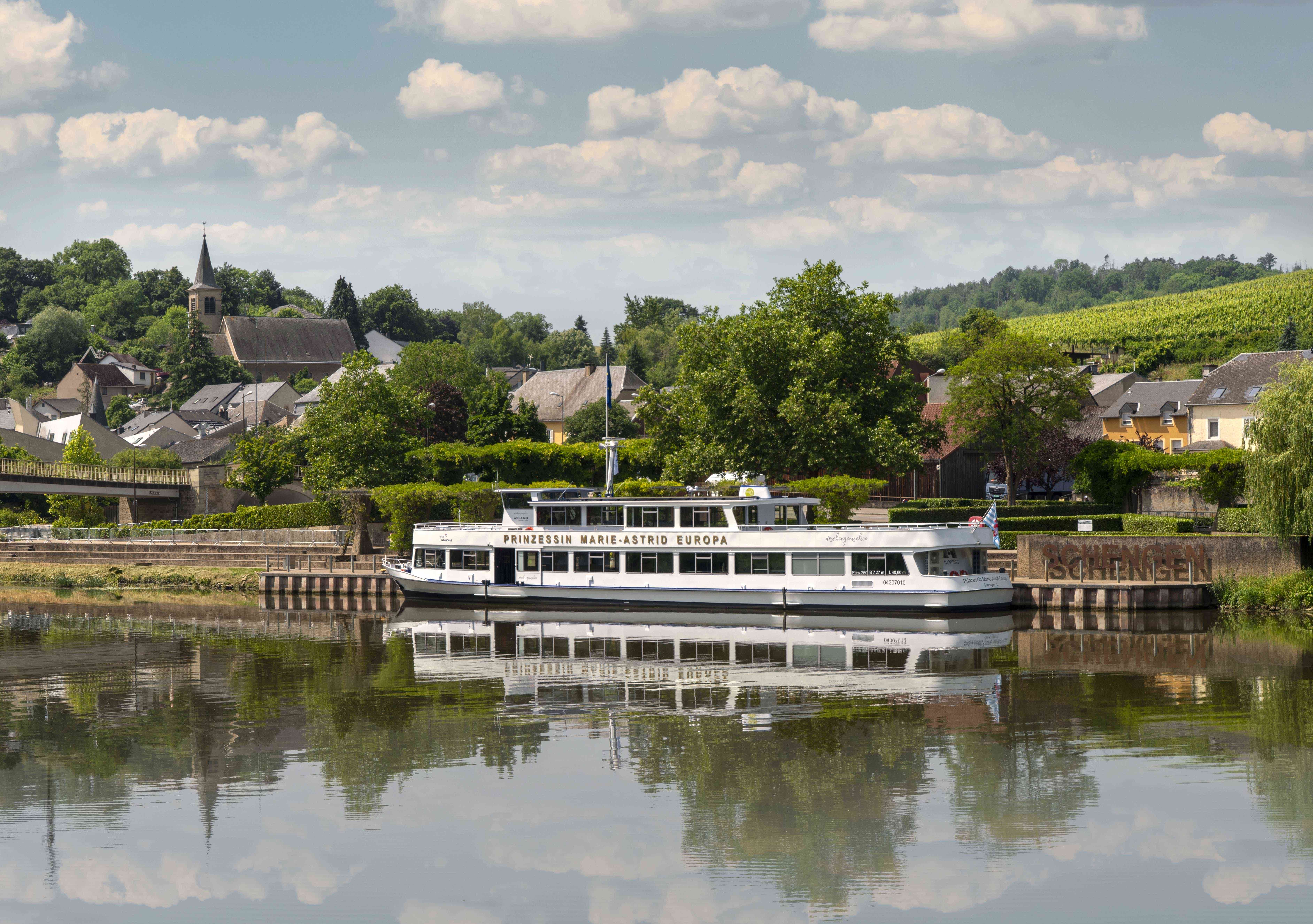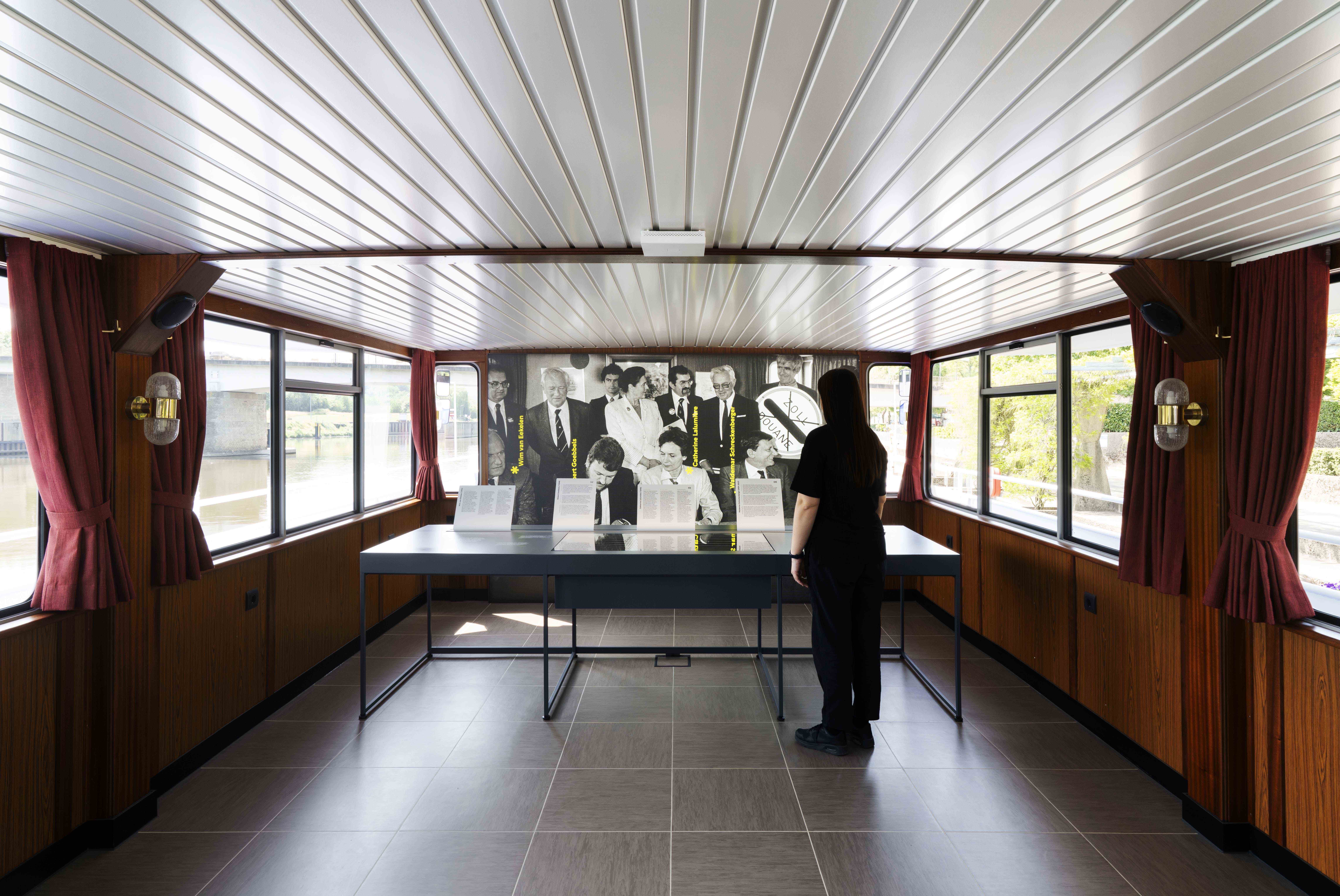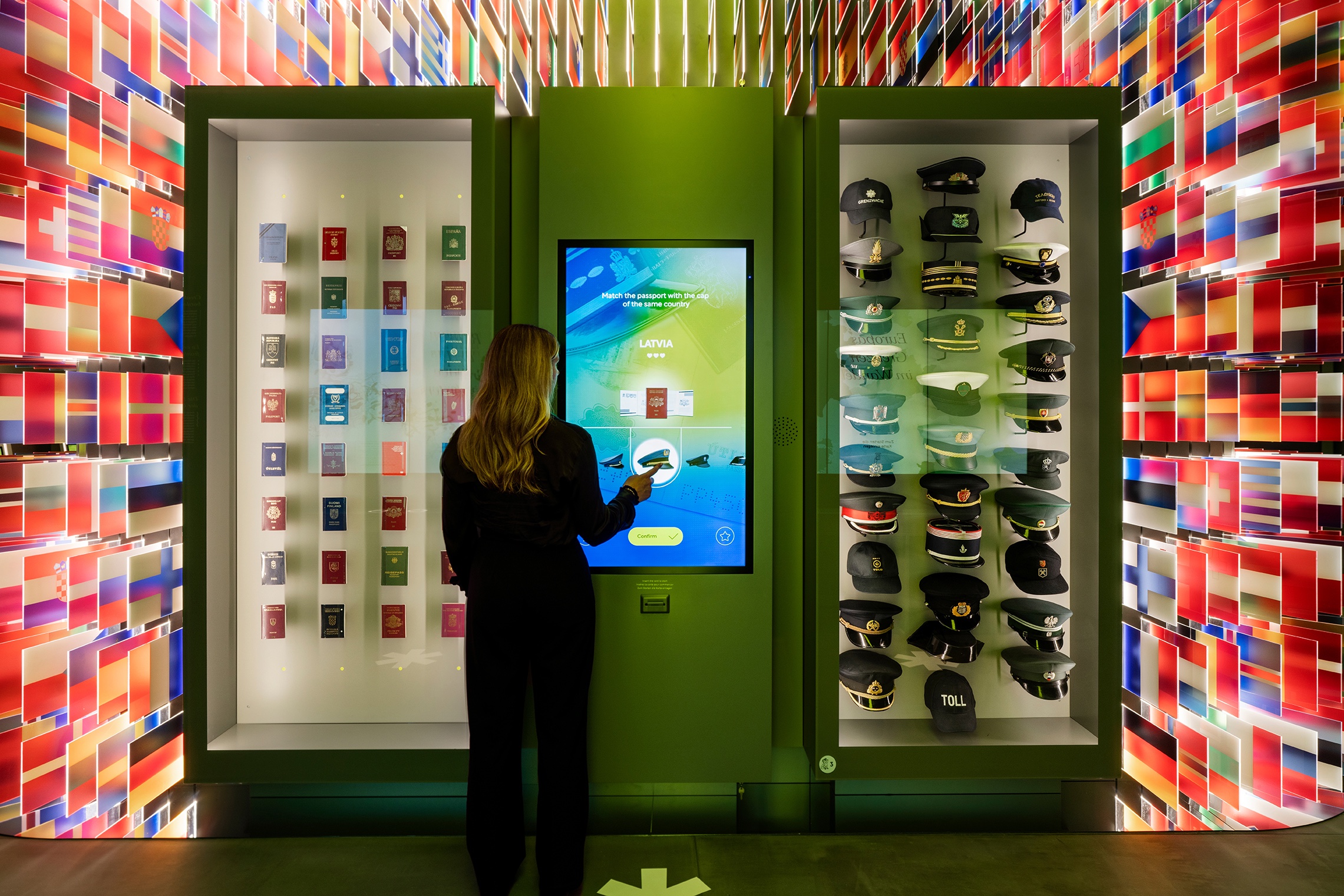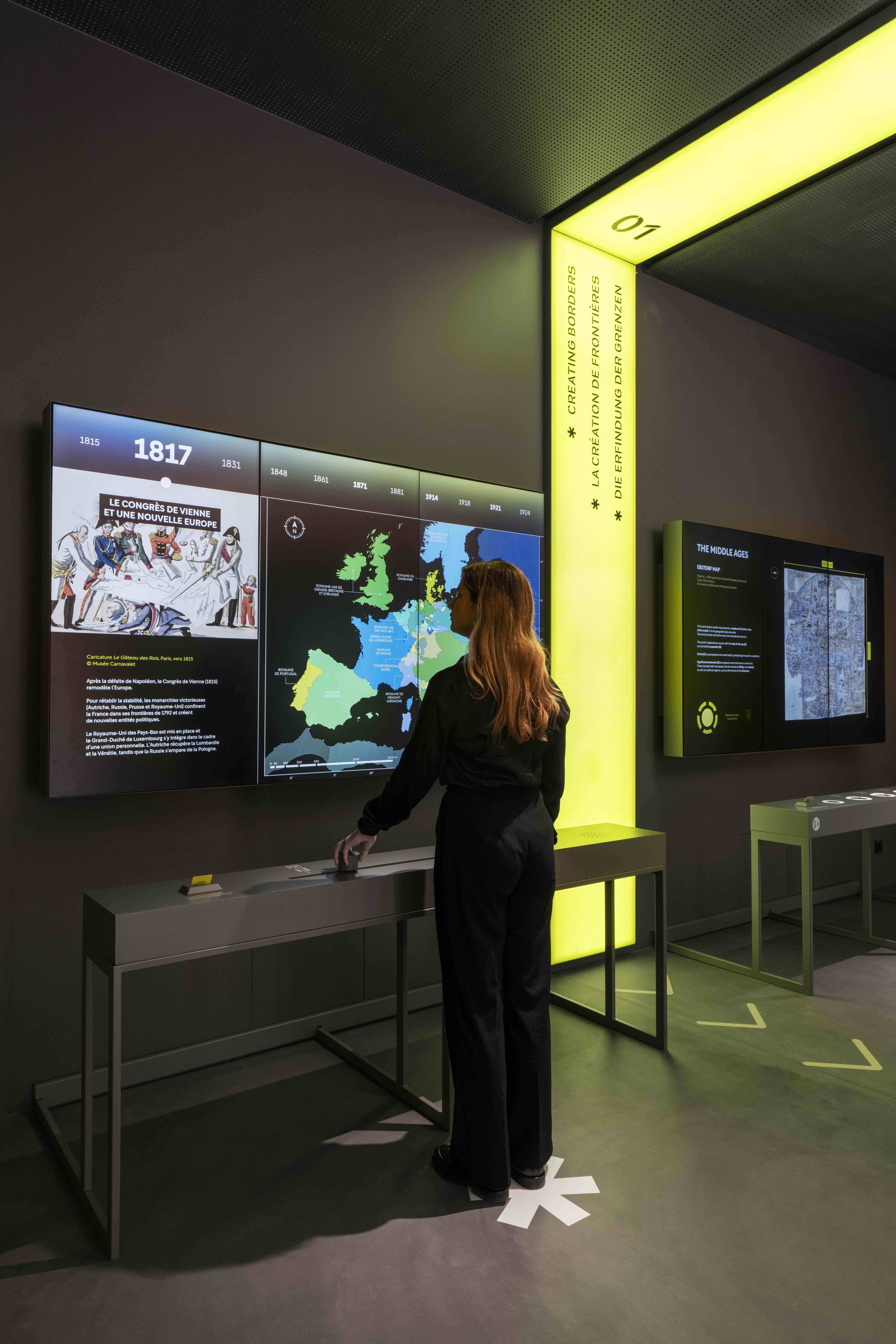Schengen Museum
A new multimedia and interactive museum showcases the story of borders and free movement
The multimedia project for the Museum by Migliore+Servetto and Karmachina, which follows the restoration of the existing structure by Forma Architects, guides visitors as they rediscover one of Europe’s foundational moments, involving them and accompanying them in an immersive experience that passes through the past and the present and looks towards the future.
From the concept, curated by Historical Consulting, we reinterprets the Museum space as a “borderless” place, not only in spatial terms, with no architectural barriers, but also at the multimedia and narrative level. The museum develops as a route structured in stages, between the physical and the digital. It is an engaging journey to experience diversity, possible intersections and integration in an intuitive, interactive and playful manner, which also alternates moments of exploration and reflection. There are 19 installations in a linear progression of texts and objects related to the themes of the four main sections, each with different content, form and multimedia. A circular path flows, culminating in the central core, the “Cube”, the narrative heart that encloses an immersive and engaging installation at the end of the exhibition.
In this multimodal exhibition concept, the Cube constitutes the core of the set-up: it is a memorable and dynamic identity-forming sign, which represents the creative concept of “borderlessness” between countries and the multitude of people who are part of them, where the flag pattern that defines the skin of the cube symbolises the values of union and cooperation. The space expands and develops thanks to a system of mirrors and dynamic lights that produces the effect of a pulsating organism, transforming the Cube into an infinite tower that transcends physical and conceptual boundaries. Inside, an evocative installation recounts the personal adventures of people from inside and outside the Schengen area, testimonies that introduce an emotional catharsis as the final epilogue of the exhibition’s narrative experience.
The design also includes the redevelopment and refitting of the Prinzessin Marie-Astrid Europa boat, the site of the signing of the Schengen Treaty. The boat and its historical structure, which were worn out by use and the passage of time, serve as the background for the story told, maintaining the original structure of the boat but at the same time creating a continuous dialogue with the new layout of the Museum. The renovated Boat hosts new functions, such as a conference space, a temporary exhibition area and a lounge, as well as a new dynamic installation that tells the story of the signing of the Schengen Agreement. The “Signature Room” allows visitors to travel back in time, transporting them to the same space that welcomed the representatives of the first signatory countries of the Agreement in 1985.
WHAT
Permanent exhibition
WHEN
2025
WHERE
Schengen, Luxembourg
FOR WHOM
Commune de Schengen
WHAT WE DID
Experience design
Multimedia content design and production
WITH WHOM
Paolo Ranieri - Multimedia design
Rino Stefano Tagliafierro - Art direction
Marina Cinciripini - Exhibition design
Emiliano Bagnato, Alberto Modignani - Music and sound design
Chiara Zaniol, Esther Chionetti - Content design
Lara Aleotti, Veronica Galofaro - Production
Rosa Rossitti, Clara Costa - Graphic design
Pietro Canepa, Luca Grazioli, Daniela Quaglino, Elisa Serravalli - Post production and video editing
Daniela Huqi - UI/UX design
Elisa Fabris, Michele Tranquillini - Illustrations
